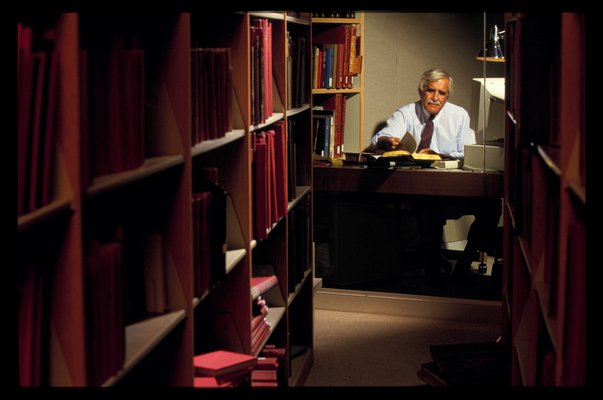
Nicolai Cikovsky Jr., an art historian and curator whose pioneering research and exhibitions on American art history helped spark new interest in the field, died on May 1 at his home in Washington, D.C. He was 83. The cause of death was colon cancer and leukemia.
In 1942 Dr. Cikovsky’s parents bought a house in North Sea where they spent summers until the late 1970s, often in the company of other artists, such as David Burliuk; they moved there permanently in the late 1970s. After their deaths, Dr. Cikovsky continued to summer at their home.
The son of Nicolai Cikovsky, a Russian-born American painter, and Hortense Hilbert, the director of the National Organization of Public Health Nursing, Dr. Cikovsky was born on February 11, 1933, in New York City. He attended the New Lincoln School in New York, Harvard College (bachelor’s degree magna cum laude, 1955), and Harvard University (master’s degree in 1958 and Ph.D. in 1965). After teaching at Skidmore College, Dr. Cikovsky taught at Pomona College and Vassar College where he was also director of both institutions’ art galleries. He was a professor of art history at the University of New Mexico from 1974 to 1984 and chair of the department of art from 1974 to 1978 and 1980 to 1981. In 1983 he was appointed curator of American Art and later senior curator of American and British Painting at the National Gallery of Art, where he remained until his retirement in 2002.
A renowned scholar of nineteenth-century American art, he published more than 50 articles and books on American artists such as George Inness, Samuel F. B. Morse, and Thomas Eakins. Among his most celebrated exhibitions were “James McNeill Whistler,” 1994, and “The Victorians,” 1997, which were organized by the National Gallery and toured to other museums around the world. His 1995 exhibition, “Winslow Homer,” which included 235 objects and was seen by more than 345,000 people at the National Gallery, was described by John Updike as “one to make an American proud.” During his time as curator at the National Gallery, the museum significantly expanded its collection of American paintings, acquiring works by artists such as William Harnett, Winslow Homer, Horace Pippin, and Augustus Saint-Gaudens.
Elected to Phi Beta Kappa in 1955, he was awarded a Guggenheim Fellowship in 1978; the Meiss Publication Award from the College Art Association, 1980; and a Samuel H. Kress Senior Fellow, Center for Advanced Study in the Visual Arts at the National Gallery of Art in 1982 – 1983.
Endowed with sartorial elegance, a sharp wit and deep intellect, Dr. Cikovsky possessed a great talent to speak eloquently and concisely about art to the general public. He was an ardent reader, fan of crossword puzzles and Premier League soccer, and a marvelous cook who made Chinese food for his family every Sunday. Devoted to his rescue dogs, he named his longhaired white spitz Jimmy after James McNeill Whistler, as ever combining art and life.
He is survived by his wife of 37 years, Sarah Greenough, senior curator of photographs at the National Gallery; and two children, Emily Hilbert Cikovsky of California and Sophia Greenough Cikovsky of San Francisco; and two grandchildren, Nicolai and Isabella Sobalvarro.
Memorial donations may be sent to the National Museum of African American History and Culture (www.nmaahc.si.edu) or the Washington Humane Society (www.washhumane.org).